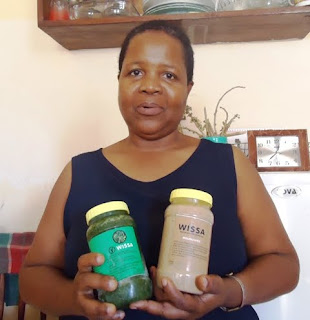 “Are all these made from cassava?” this was the most popular question of the day by people from all walks of life invited to the Mozambique Cassava Day held in Nampula, Mozambique in November 2010.
“Are all these made from cassava?” this was the most popular question of the day by people from all walks of life invited to the Mozambique Cassava Day held in Nampula, Mozambique in November 2010.There was a wide array of foods made from cassava and its derivatives, cassava cakes, cupcakes, cookies, biscuits, bread, pies, samosas, chin chins, cocktail tit bits, doughnuts, egg rolls, meat balls, pancakes, croquettes, sausage rolls, and puddings to be sampled. All the other food items were made from 100% high quality cassava flour except for the bread which had wheat flour added.

Speaking on behalf of the governor of Nampula, the Provincial Director of Commerce and Industry, Ilidio Marfres, said the crop had immense potential to develop the province. He was happy to note that the province’s strategic plan included exploring the use of cassava as a source of raw material for industries.
He challenged them to explore the wide range of uses and opportunities offered by cassava that go beyond making their staple food, ‘karakata’ – a paste made from its flour and ‘mathapa’ – cassava leaves cooked in coconut - to fight poverty and develop the region.

Richard Okechwuku, Deputy Project Manager of UPoCA project, noted the great strides made in the province in one year following a series of trainings conducted on cassava processing by the project.
“We were here last year, at a time like this, to train on the various products that can be made from cassava. Today, we are impressed to see so many products as a result of it.
”

The day was organized to create awareness on the versatile hardy tuberous crop by IITA’s UPoCA project, Mozambique’s Center for Promotion of Agriculture (CEPAGRI), the Mozambican Agricultural Research Institute (IIAM) and the Provincial Office of Agriculture in Nampula (DPA).
It brought together farmers, private sector, non-governmental organizations, and government organizations and aimed at creating awareness on cassava utilization and lobbying for much-needed government support
.gif)





